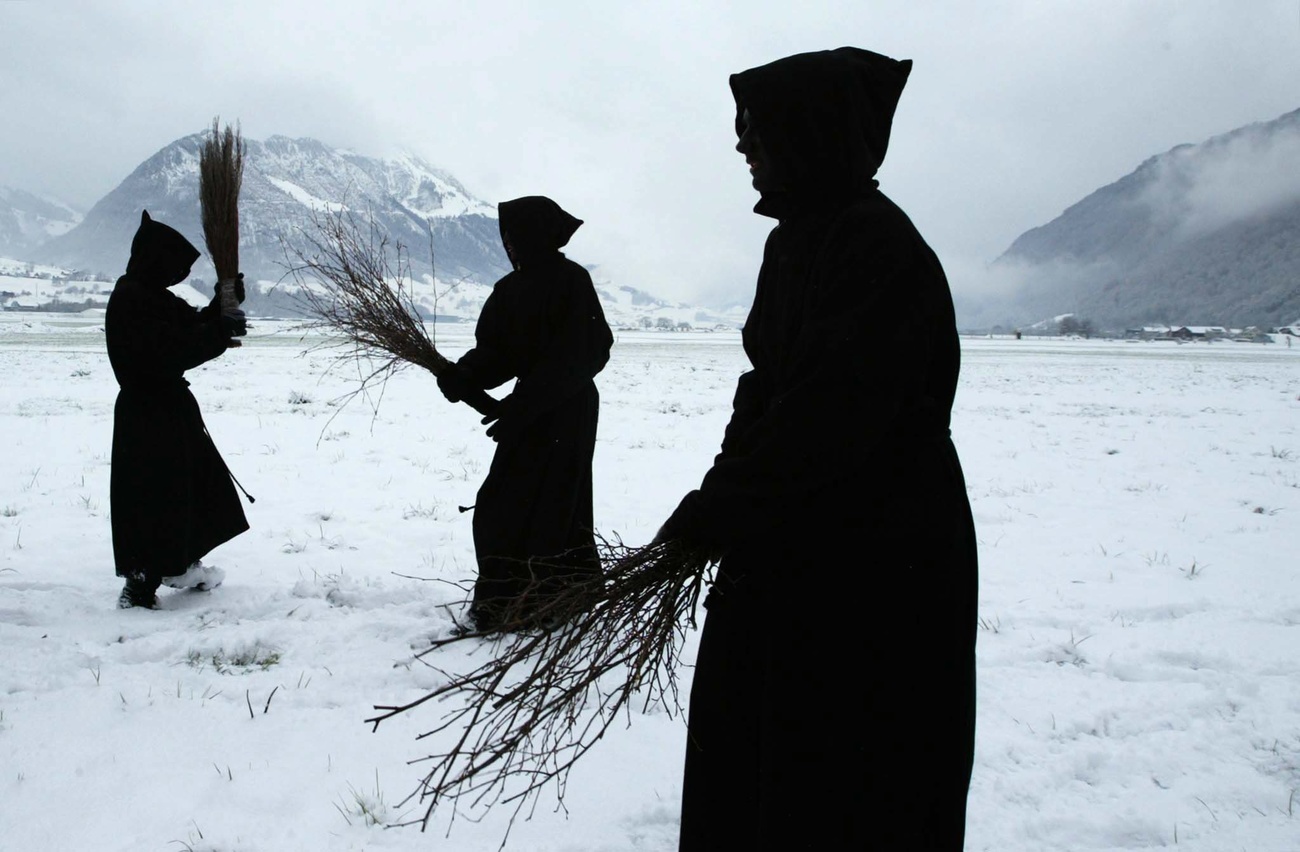Hydroelectric power faces a dry spell

Hydroelectric energy provides a vital share of Switzerland's power requirements, but its potential has almost been fully exploited.
As demand for electricity continues to increase, environmental concerns and costs are holding back the further development of hydropower.
Water is perhaps Switzerland’s most important natural resource. Two of Europe’s biggest rivers, the Rhine and the Rhone, start their journeys in the Alps.
Nearly two thirds of Switzerland’s electricity production comes from hydropower, covering 13 per cent of the country’s total energy needs.
Hydropower is in fact the country’s only indigenous energy resource.
According to the Federal Office for Water and Geology, Switzerland’s topography and high level of snow and rainfall create the ideal conditions for this energy resource.
Studies have shown that between 80 and 90 per cent of Switzerland’s hydroelectric potential has been exploited, through the use of big dams in the Alps and smaller structures along the country’s rivers.
But it is unlikely that the full potential will ever be used.
Environmental concerns
Anton Schleiss, a professor of hydraulic construction at Lausanne’s Federal Institute of Technology, says that environmental concerns are the biggest hindrance to further development.
“Because of environmental problems surrounding the development of the last ten to 20 per cent, we could only slightly increase our output,” Schleiss told swissinfo. “So we have almost reached our maximum potential in Switzerland.”
According to Schleiss, there are numerous sites where large alpine dam projects would be feasible.
“The problem is that they are in valleys that are in a pristine condition,” he said. “They are also the last ones in a truly natural state, with a fragile environment.”
Switzerland’s many rivers could provide some extra output in the future, some of them showing a high potential for hydropower development.
However, Schleiss pours cold water on the idea that river power facilities would be sufficient to keep up with demand. “They can only give us a small increase of our total output,” he said.
He adds that any development of this type of installation would have to go hand-in-hand with other measures, such as flood prevention.
Alpine dams
Existing facilities may get a new lease of life from power companies in the near future. Statistics have revealed that far more water flows into Switzerland’s alpine dams than experts thought when they were built.
“This means more water can be retained in summer,” Schleiss told swissinfo, “But to do that you have to heighten dams. There are a whole series of dams whose volume could be increased in the near future.”
The Grimsel and Mauvoisin dams are just two facilities that could benefit from such a treatment in the near future.
Power output could also be increased by a few percentage points by upgrading aging production plants. Many of them are now reaching the end of their working life, in some cases having lasted 60 years.
Increasing demand
The biggest challenge facing power operators now is responding to peak electricity demand. This is especially important in the wider European context, since Switzerland is a net exporter of electricity.
“The main competency of Swiss power suppliers is responding to peak demand,” said Schleiss. “With an ever-increasing demand for that type of product, Switzerland has a role to play in Europe.”
While producers cannot increase their total output by more than a few per cent, they are now looking at ways of boosting their capacity for short periods.
One such project has been the Cleuson-Dixence extension of the Grande Dixence hydroelectric scheme in canton Valais. The new facilities were designed to generate large amounts of power at short notice.
However, an industrial accident has put the new facilities on hold for the past two years while the courts decide who was responsible.
Financial burden
The development of new facilities could be held up by the considerable sums of money involved, Schleiss told swissinfo.
“We are looking at a total of SFr10 to 20 billion over the next 20 years,” he said.
Power producers have the technology on hand to carry out their projects. Now they are waiting for electricity prices to reach the right level before launching construction work.
They are also facing other financial demands. Power companies have to pay special taxes to the cantons.
They pay out on average around SFr400 million, two thirds of which goes to four cantons: Uri, Graubünden, Ticino and Valais. Despite that, the companies still manage to turn a profit.
“If you use somebody else’s natural resources, you have to pay for it,” Schleiss said. “Besides, at the end of the day, it’s still the consumer who ends up paying for it.”
swissinfo, Scott Capper
Hydroelectricity accounts for over 60 per cent of the power produced in Switzerland.
This is equivalent to 13 per cent of Switzerland’s total energy use.
More than half the hydraulic power is produced in four cantons: Uri, Ticino, Graubünden and Valais.
Taxes paid by hydraulic power producers to the cantons and local authorities are worth around SFr400 million each year.

In compliance with the JTI standards
More: SWI swissinfo.ch certified by the Journalism Trust Initiative










You can find an overview of ongoing debates with our journalists here . Please join us!
If you want to start a conversation about a topic raised in this article or want to report factual errors, email us at english@swissinfo.ch.